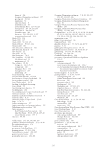Lake Eyre Basin Rivers 14 Rainfall and evaporation, the two most important drivers of the ecology of the rivers, are the variables most likely to be affected by climate change. Predictions for rainfall remain considerably uncertain, with potentially more intense rainfall, but there is high confidence for increasing temperatures (Reisinger et al. 2014), which means increasing evaporation. Inevitably, this will restrict the amount of time that different plants and animals have to complete their life cycles during boom periods, when most reproduction and recruitment occur. The most widespread threat to the rivers, their dependent biodiversity and human livelihoods comes from the large range – and number – of invasive species. Control of these species can take considerable resources (Firn et al. 2015a Firn et al. 2015b), even though some species have been deliberately introduced by government agencies. Feral animals within the Lake Eyre Basin include species from tropical Australia, such as sleepy cod (Oxyeleotris lineolata) and redclaw crayfish (Cherax quadricarinatus), as well as alien species from other parts of the world, such as the goldfish (Carassius auratus) and mosquito fish (Gambusia affinis) (see Chapter 3). These adaptable and widespread animals have the potential to out- compete native species and disrupt ecosystems. Within the last 10 years, introduced cane toads (Rhinella marina) have become common along Cooper Creek and may be driving a decline in goanna populations, as elsewhere. Introduced mammals are also widespread, including camels (Camelus dromedarius), pigs (Sus scrofa), foxes (Vulpes vulpes) and cats (Felis catus). Camels and pigs can damage watering areas while foxes and cats prey on small mammals, birds, reptiles and invertebrates. Similarly, invasive plant species are widespread across the catchment, forcing a strong focus on control given their impacts on biodiversity and grassland productivity for livestock (Firn et al. 2015b). These species include various cactus species, prickly acacia (Vachellia nilotica), rubber vine (Cryptostegia grandiflora), parkinsonia (Parkinsonia aculeate) and buffel grass (Cenchrus ciliaris). People have a strong connection to waterholes (Silcock 2010), which is manifested in increasing tourist visitation leading to pollution around waterholes and damage to vegetation through the felling of logs for camp fires and trampling of sensitive riparian groundcover plants. Livestock grazing may also contribute to some loss of plant cover, as well as increased sedimentation of waterholes, although there remains relatively little evidence of widespread change in over more than a century (Silcock et al. 2013). The practice of stocking and destocking in unison with natural boom and bust cycles may create some resilience to livestock grazing impacts in the landscape. Conclusion Knowledge of the environmental values and threats to the sustainability of the rivers of the Lake Eyre Basin has rapidly increased in the last decade. This knowledge continues to reinforce the iconic status of this magnificent river basin which covers such a large part of the continent (Pisanu et al. 2015). Indeed, it was the combination of significant cultural and environmental values and free-flowing status that resulted in the Lake Eyre Basin Partnership receiving the prestigious Australian and International Riverprizes in 2014 and 2015 respectively. The Basin is clearly one of the great desert river systems of the world, and one of few unaffected by dams, major diversions of water or developments on its productive floodplains. Development of the rivers for irrigation will inevitably continue to be a major threat, as long as there is potential for
Downloaded from CSIRO with access from at 216.73.216.191 on Nov 29, 2025, 1:01 PM. (c) CSIRO Publishing

















































































































































































































































































